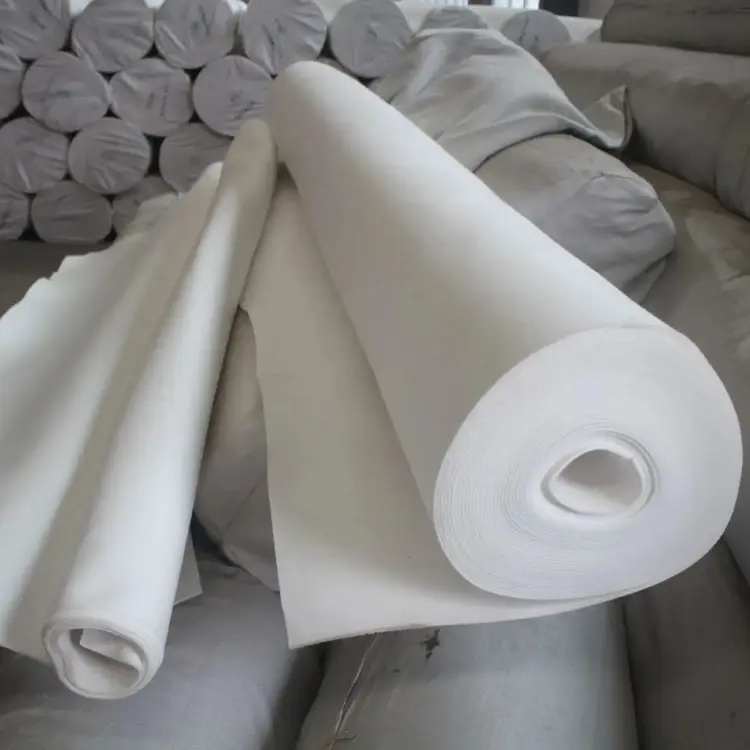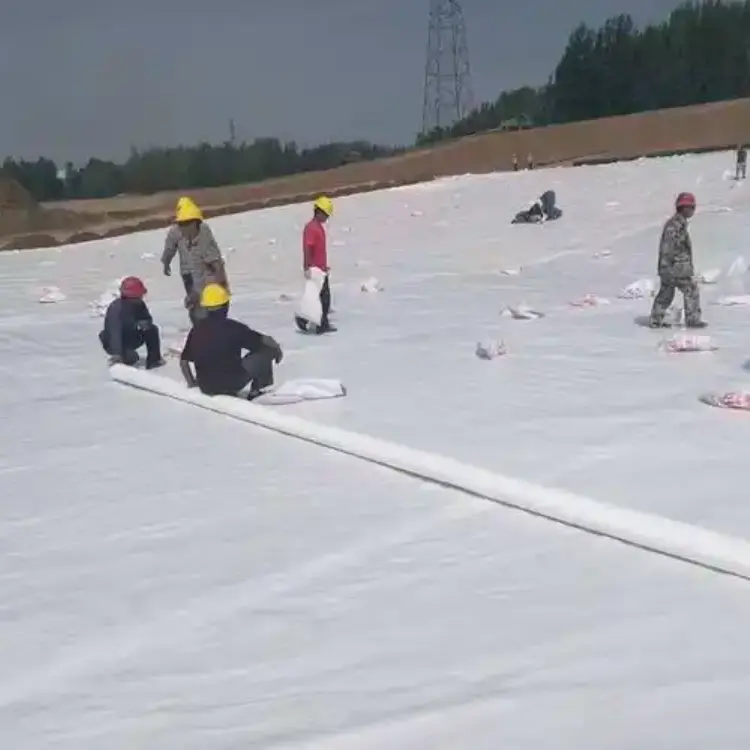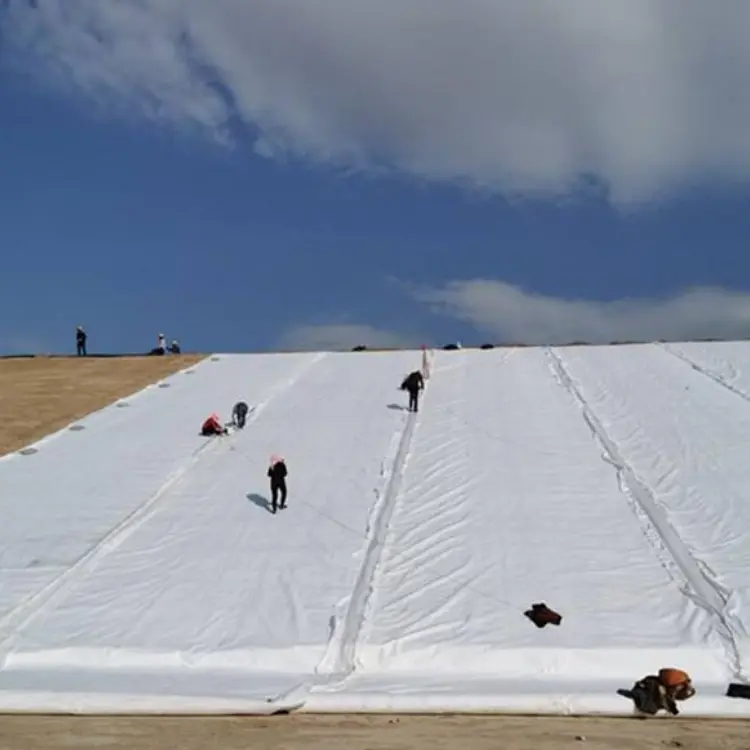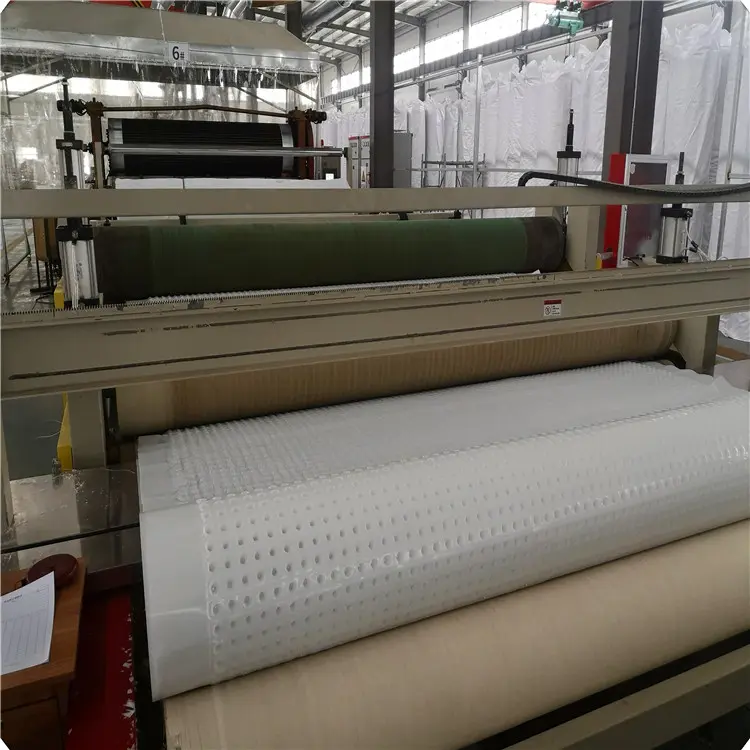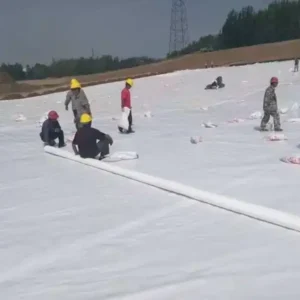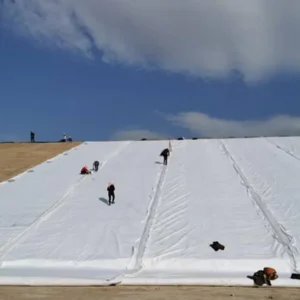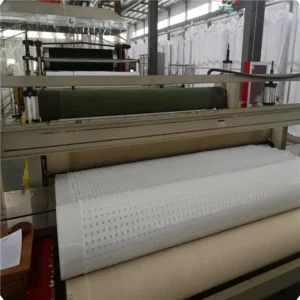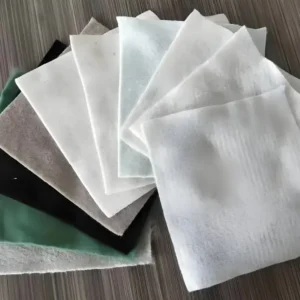Material Composition & Manufacturing
NonWoven geotextile fabrics consist of 100% polypropylene or polyester fibers bonded mechanically (needle-punched), thermally, or chemically. These geotextile non woven fabric exhibit random fiber orientation, optimized for permeability and tensile strength.
Technical Specifications
- Weight Range: 100–800 g/m² (customizable)
- Thickness: 0.5–5.0 mm
- Tensile Strength: 8–40 kN/m
- Permittivity: 0.02–2.0 sec⁻¹ (ASTM D4491)
- Puncture Resistance: 200–1,500 N (EN ISO 12236)
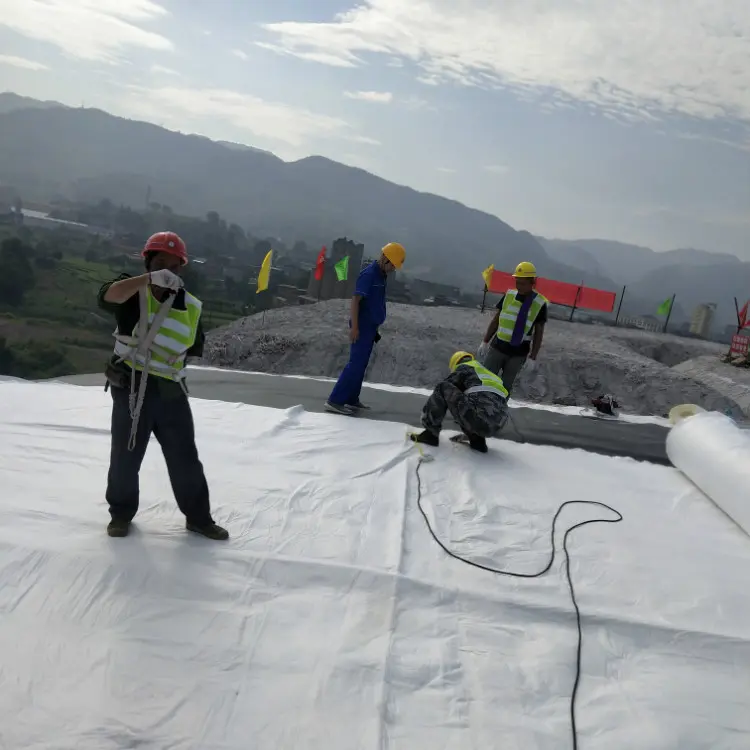
Core Functions
- Separation: Prevents soil layer intermixing in road/railway subgrades
- Filtration: Permits water flow while retaining soil particles (AASHTO M288 compliant)
- Reinforcement: Stabilizes slopes and embankments (e.g., coastal/riverbank protection)
- Drainage: Facilitates lateral water movement in retaining walls and landfills
Key Applications
| Industry | Use Cases |
|---|---|
| Transportation | Subgrade stabilization for highways/railways; concrete pavement interlayers |
| Environmental | Landfill liner protection; erosion control membranes |
| Hydraulic | Coastal revetments; riprap underlayment |
| Landscaping | Weed suppression; root barrier systems |
Performance Advantages
- Chemical Resistance: Inert to soil alkalinity/acidity and biological decay
- UV Stability: Polypropylene formulations resist solar degradation (ASTM D4355)
- Cost Efficiency: Reduces aggregate consumption by 30% in road projects
- Sustainability: Recyclable material with Cradle-to-Cradle® compliance
Quality Certifications
Manufactured under ISO 9001 with compliance to:
- ASTM D4759 (UV resistance)
- EN 13249 (European road applications)
- GRI-GM19 (geomembrane protection)
Contact Us
Hengshui Aohong Engineering Materials Co., Ltd.
- 161# Ronghua Street, Taocheng District, Hengshui, Hebei, China.
- +86 318 5261 900
- +86-186-3287-9676 (WhatsApp)
- sales@cn-ahjt.com
